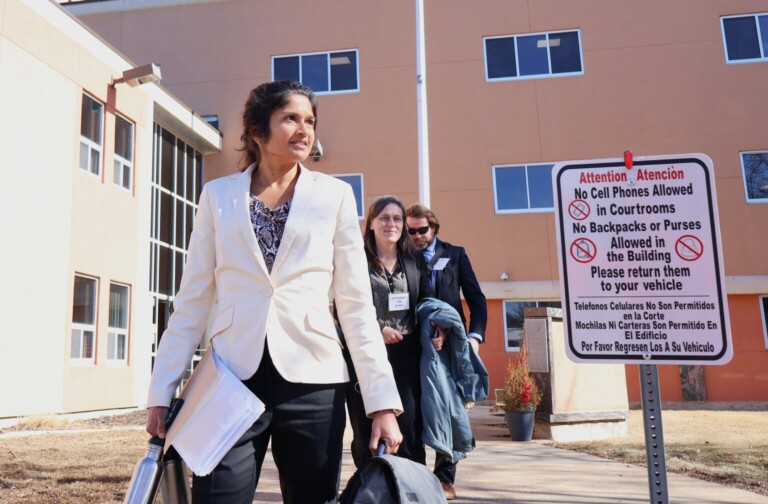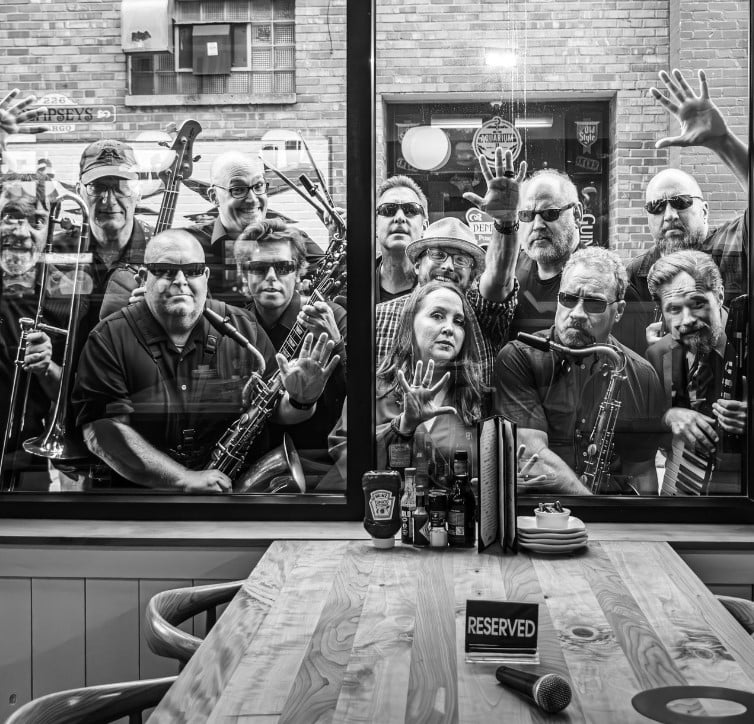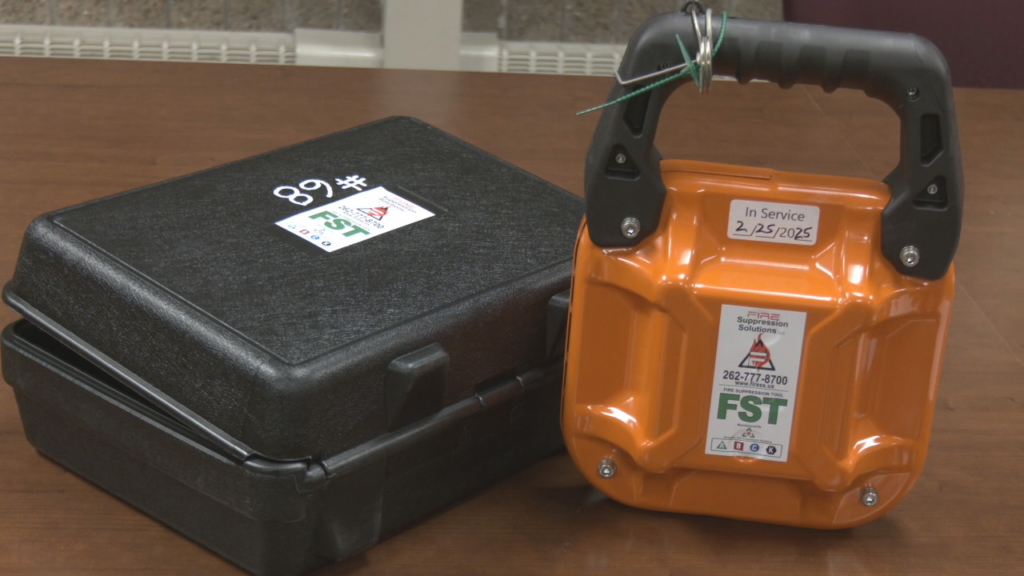Former Greenpeace leader disputes allegations by Dakota Access Pipeline developer

MANDAN, N.D. (North Dakota Monitor) — A former executive director of Greenpeace’s U.S. affiliate on Wednesday refuted accusations from the developer of the Dakota Access Pipeline that the environmental group was a major force driving protests against the pipeline in 2016 and 2017.
Energy Transfer has taken Greenpeace to trial over claims that the environmental group incited illegal acts by protesters in North Dakota that cost the company millions of dollars in alleged property damages and lost revenue. It also claims Greenpeace conspired to defame Energy Transfer in order to harm its relationship with banks financing the construction loan for the pipeline.
Annie Leonard, who led Greenpeace USA from 2014 to 2023, told jurors that Greenpeace only got involved in the protests because the Standing Rock Sioux Tribe asked. Tribal citizens started the demonstrations against the pipeline out of concerns that it poses a pollution threat to the tribe’s drinking water. The tribe also sees the pipeline as an infringement on tribal sovereignty because it crosses unceded Sioux Nation land.
Leonard said that at some point during the protests, a Navajo activist named Tom Goldtooth — a longtime friend of hers — asked if there was anything Greenpeace could do to help the cause. Leonard said that while Goldtooth was not a spokesperson for the protests, he helped relay messages from Standing Rock leaders.
She said Goldtooth shared with her that the demonstration camps had nowhere for people to charge their phones. This made it difficult for organizers to communicate with one another and spread word about the protests, she said. According to Leonard, Goldtooth also said that Standing Rock wanted help keeping the protests peaceful.
In response, Greenpeace sent a truck equipped with solar panels to the camps, Leonard said. It also set aside money to pay for Native organizers to go to the camps and teach people nonviolent protest strategies, including deescalation tactics, she said.
Records shown in court on Wednesday indicated Greenpeace’s U.S. affiliate approved a grant for roughly $20,000 to send trainers to North Dakota. Leonard privately fundraised another $90,000 in donations for the same purpose, the documents showed.
Leonard said one reason she raised the money privately was because Greenpeace didn’t have any enough funds to award another grant. She also said she wanted to help be a “matchmaker” to directly connect donors with Native organizations working at Standing Rock.
Greenpeace never tried to make its involvement in the demonstrations secret, though it also didn’t want to bring too much attention to itself, Leonard said. She said that since Greenpeace is a household name, it has the tendency to overshadow local organizers when it gets involved in a cause.
“We didn’t want to make the story be about us,” she said.
Trey Cox, an attorney representing Energy Transfer, asked whether her testimony conflicted with an internal email Leonard sent during the protests describing Greenpeace’s support for Standing Rock as “massive.”
Leonard on Wednesday said she had exaggerated. She said she had written the email out of “exuberance” for the amount of money and resources Greenpeace was able to contribute to the cause.
She said that even though she went out of her way to help support Standing Rock activists, she spent most of her time focused on other tasks.
“It was not major compared to the universe of things I was doing for Greenpeace,” Leonard said. She said she never went to the protests in person.
Brent Maness, a former Greenpeace employee, also testified about Greenpeace’s role in the protests on Wednesday. Maness never went to the protests, but was in charge of some employees Greenpeace sent to the camps.
During his questioning of Maness, Cox displayed an agenda for one Greenpeace nonviolent direct action training that occurred in 2015. The agenda indicates that the training discussed the use of lockboxes and other technical blockades.
Energy Transfer has repeatedly brought up lockboxes and blockades as evidence Greenpeace wanted protesters to obstruct work on the pipeline. Pipeline opponents used the lockboxes, also known as “sleeping dragons,” to attach themselves to construction equipment.
One bullet point on the agenda also referenced “shaming police.”
Maness said he didn’t remember why that was listed on the program. He said that the trainings had a lot more “content and context” that is not in the agenda.
“I can tell you unequivocally Greenpeace doesn’t teach people to shame police,” he said.
Maness also testified Wednesday that while Greenpeace provided funding to send trainers there, the organization did not control the trainers’ curriculum.
Greenpeace witnesses have acknowledged they brought lockboxes to the protests but maintain that the trainers didn’t encourage or instruct protesters to use them.
Leonard said that it was her understanding that Greenpeace provided the lockboxes because organizers on the ground at the protests had asked for the devices.
Cox brought up a text message exchange between Leonard and Goldtooth in 2016 in which he sent a photo of a Dakota Access Pipeline protester using a lockbox on construction equipment. Leonard replied that the action “ups the ante.”
Cox asked what she meant by this.
Leonard said that lockboxes can be tools for nonviolent civil disobedience, which she views as a “tried and true” component of American protest movements.
“When Rosa Parks refused to leave that seat, that upped the ante,” she said.
Cox said Parks wasn’t a fair comparison because she wasn’t trespassing on private land.
“She had permission to be on that bus, did she not?” he asked Leonard.
“She didn’t have permission to be on that seat,” Leonard replied.
Cox countered that Parks’ action did not disrupt business for Montgomery’s public transit in the same way that the Dakota Access Pipeline protests disrupted construction.
Leonard pointed out that Parks’ act of civil disobedience, and her subsequent arrest, was the catalyst for the Montgomery bus boycott — which did disrupt profits for the bus system. That boycott led to a U.S. Supreme Court ruling that declared segregation on public buses unconstitutional.
Greenpeace attorneys said they anticipate wrapping up their case on Friday.
(Story written by Mary Steurer – North Dakota Monitor)







